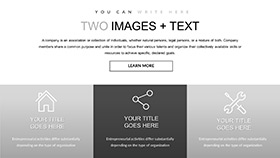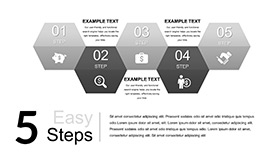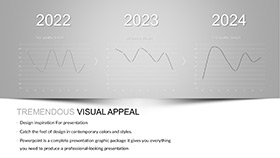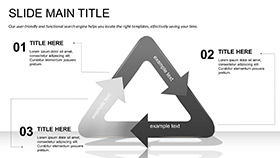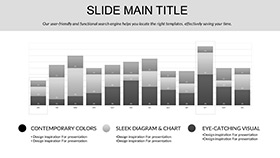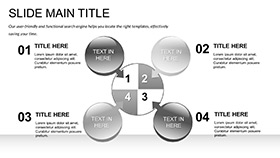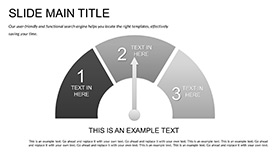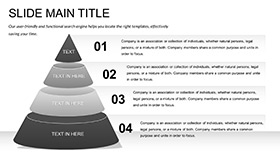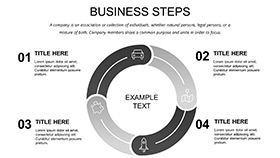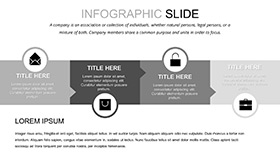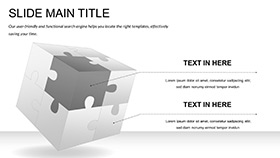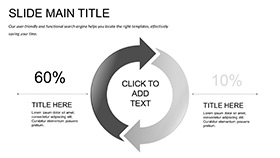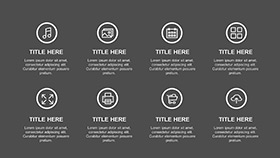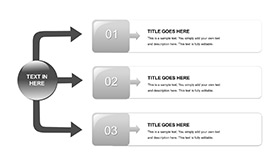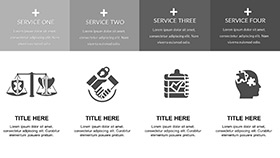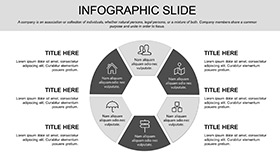Step into the contemporary lab of presentation design with the Modern Chemistry PowerPoint template, where innovation meets clarity. Tailored for professionals and academics exploring everything from nanomaterials to sustainable reactions, this template delivers 28 diagrams across seven color palettes, ensuring your slides resonate with today's audiences. Its minimalist ethos strips away distractions, letting kinetic theories or coordination compounds take the spotlight.
With an attractive layout that balances form and function, backgrounds subtly nod to metallic sheens or crystalline forms, compatible with PowerPoint's latest features for fluid animations. Whether briefing stakeholders on catalyst efficiencies or lecturing on redox processes, this tool empowers you to blend data with design seamlessly.
Core Components for Cutting-Edge Visuals
Dive deeper into the template's arsenal: Slide two's coordination sphere diagram rotates layers for ligand arrangements, ideal for transition metal complexes. By slide 10, a sleek org chart maps out polymer architectures, with nodes expandable for branching details.
- Advanced Diagrams: 28 in total, spanning from voltammetry curves to crystal field splittings.
- Color Versatility: Seven schemes, from cool silvers to warm coppers, for thematic alignment.
- Text Handling: Responsive fonts that adapt to superscript needs in formulas.
- Integration Tools: Ready for 3D model embeds or equation auto-formatting.
In a conference setting, the spectrogram slide (number 16) could overlay UV-Vis data, with peaks adjustable for wavelength shifts, echoing techniques from analytical labs.
Targeted Uses in Contemporary Chemistry
Consider a webinar on green chemistry - this template's flowchart on slide 19 sequences atom economy steps, with icons for waste minimization. Educators might employ the matrix layout in slide seven for comparing catalysts, rows for types and columns for selectivities, sparking debates on enantiopure synthesis.
For corporate overviews, adapt the dashboard slide 26 for KPI tracking in R&D pipelines, integrating gauges for yield metrics. It edges out basic tools by offering pre-aligned grids, saving hours on formatting alone.
- Academic Lectures: Sequence modules with progress bars tied to reaction yields.
- Industry Briefs: Visualize supply chains for reagent sourcing.
- Workshop Facilitation: Include quiz embeds for concept reinforcement.
A lab coordinator once repurposed the energy diagram for barrier heights in SNAr mechanisms, making abstract kinetics tangible during team trainings.
Hands-On Adaptation Process
Begin by applying a color scheme in the variants menu, then customize the master for recurring elements like header logos. For a data-heavy slide, import CSV values into the scatter plot on slide 13, labeling points for isotope ratios effortlessly.
Add depth with morph transitions between similar diagrams, like evolving from Lewis dots to VSEPR shapes. Collaborate via OneDrive shares, where changes propagate without layout breaks. Pair it with Python scripts for automated graphing if your workflow demands.
The buffer capacity graph in slide 21? Titrate curves on the fly by dragging control points, simulating Henderson-Hasselbalch shifts.
The Edge in Modern Presentation Design
This template embodies progress, much like how Haber-Bosch transformed fertilizers - efficient, impactful, understated. It scales for large venues with high-contrast modes and supports accessibility via alt text prompts for visuals.
From organometallics to photochemistry, unlock narratives that propel discussions forward. Secure your copy and modernize your chemistry discourse.
Frequently Asked Questions
What makes this template 'modern'?Its clean lines and adaptive features align with current design trends in scientific communication.
Are animations included?Yes, with options for path and spin effects on molecular models.
Can it handle large datasets?Certainly - diagrams link to external sources for dynamic updates.
Is it Mac-compatible?Fully, with no feature loss across platforms.
How editable are the backgrounds?Totally - adjust opacity or swap images via the format panel.
Does it come with icons?Over 40 chemistry-specific icons for quick enhancements.









